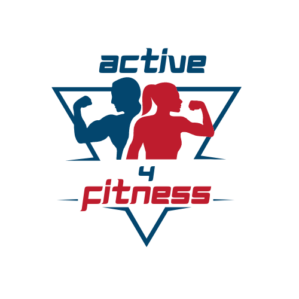How to Build Muscle for Skinny Guys: A Complete Beginner’s Guide

Building muscle as a skinny guy can feel like a challenging task, especially when you’re naturally predisposed to a leaner frame. But don’t worry, with the right approach to training, nutrition, and recovery, you can transform your physique and build the muscle you’ve always wanted. This detailed guide will walk you through the entire process, offering you everything you need to know as a beginner to gain muscle mass effectively and sustainably.
1. Shift Your Mindset: The Skinny-Guy Struggle
If you’re naturally skinny, you might feel like your genetics are working
against you when it comes to muscle gain. People with an “ectomorph”
body type (typically lean with a fast metabolism) often find it harder to gain
weight, but the good news is that with the right strategies, muscle growth is
very achievable.
.

Your first step is to stop thinking of yourself as limited by genetics. Success in muscle-building for skinny guys often comes down to a few key areas:
- Commitment to a structured workout and nutrition plan.
- Patience, as muscle-building takes time, especially if you’re starting with a smaller frame.
- Consistency, because results come from sticking with the process, not quick fixes.
Remember, your body can change with effort and the right plan—so embrace the challenge.
2. Understand Muscle Hypertrophy (How Muscles Grow)
To build muscle, it’s essential to understand muscle hypertrophy—the
process of increasing the size of your muscle fibers through strength training.
When you lift weights, you create small tears in your muscle tissue. The body
repairs these tears, making the muscle stronger and larger to adapt to the
stress it experienced.

There are two types of hypertrophy:
Myofibrillar hypertrophy focuses on increasing the density of muscle fibers, leading to increased strength.
Sarcoplasmic hypertrophy focuses on increasing the volume of fluid in the muscle cells, which leads to muscle size (this is what bodybuilders aim for).
As a beginner, you want to aim for a balance between both, by lifting progressively heavier weights while also ensuring you’re working within the right rep range to stimulate size gains.
3. Eating for Muscle Growth: The Skinny Guy’s Diet Plan
Perhaps the biggest challenge for skinny guys is eating enough. If you want to gain muscle, you need to be in a calorie surplus, meaning you need to consume more calories than you burn in a day. Without sufficient energy intake, your body won’t have the resources to build new muscle tissue, no matter how hard you work in the gym.

How to Calculate Your Caloric Needs:
- Estimate your TDEE (Total Daily Energy Expenditure): This is the number of calories you burn daily, including both your resting metabolic rate and your physical activity. You can use online calculators to find this number based on your height, weight, age, and activity level.
- Add a calorie surplus: To build muscle, you’ll need to consume 300-500 calories above your TDEE. This is a moderate surplus that ensures you gain weight gradually without adding too much fat. For example, if your TDEE is 2,200 calories, aim to eat between 2,500 and 2,700 calories daily.
Macronutrient Breakdown:
For muscle growth, your diet should be broken down into three main macronutrients: protein, carbohydrates, and fats.
- Protein: Aim for 8 to 1 gram of protein per pound of body weight. Protein is essential for repairing and building muscle tissue. Good sources include chicken, beef, eggs, fish, dairy, and plant-based options like lentils and tofu.
- Carbohydrates: Carbs provide the energy you need for intense workouts and recovery. As a skinny guy, you can afford to eat a higher amount of carbs to fuel your body. Aim for 2 to 3 grams of carbs per pound of body weight. Focus on complex carbs like oats, brown rice, sweet potatoes, and whole grains.
- Fats: Fats are important for hormone production, including testosterone, which plays a crucial role in muscle growth. Aim for 4 to 0.5 grams of fat per pound of body weight, focusing on healthy fats from sources like avocados, nuts, seeds, olive oil, and fatty fish.
Sample Meal Plan for Skinny Guys:
Here’s a sample meal plan for a 150-pound guy looking to gain muscle, aiming for around 2,500-2,700 calories per day:
Breakfast:
- 3 eggs scrambled with spinach
- 2 slices of whole wheat toast
- 1 cup of oatmeal with almond butter and berries
Snack:
- Greek yogurt with honey and a handful of almonds
Lunch:
- Grilled chicken breast (6 oz)
- 1 cup of quinoa or brown rice
- Mixed vegetables sautéed in olive oil
Pre-workout Snack:
- Banana
- 1 tablespoon peanut butter
Dinner:
- Salmon fillet (6 oz)
- 1 medium sweet potato
- Steamed broccoli
Post-workout Snack:
- Protein shake (whey protein mixed with water or milk)
- 1 cup of mixed berries
Evening Snack:
- Cottage cheese with a handful of walnut
4. Lift Heavy and Focus on Compound Exercises
Your workout plan is the foundation of your muscle-building journey. To see the most gains as a skinny beginner, you need to focus on compound exercises. Compound exercises target multiple muscle groups simultaneously, allowing you to lift heavier weights and build muscle more efficiently.

Best Compound Exercises for Muscle Growth:
- Squats: Works the entire lower body and core.
- Deadlifts: Strengthens the back, legs, and core.
- Bench Press: Targets the chest, shoulders, and triceps.
- Pull-ups/Chin-ups: Primarily works the back, biceps, and shoulders.
- Overhead Press: Hits the shoulders, triceps, and upper chest.
- Barbell Rows: Focuses on the back and biceps.
The Importance of Progressive Overload:
To build muscle, you need to apply the principle of progressive overload. This means gradually increasing the weight, reps, or intensity of your exercises over time. If you keep lifting the same weight week after week, your body won’t have the incentive to grow stronger.
Example: If you’re deadlifting 135 pounds for 8 reps, aim to increase that by 5-10 pounds each week. If you can’t add weight, try adding an extra rep or slowing down the tempo of the movement to create more time under tension.
5. Workout Structure for Beginners
As a beginner, it’s important to start with a well-rounded routine that gives you enough frequency to train each muscle group without overwhelming your recovery abilities.
3-Day Full Body Workout Plan:
Day 1:
- Squat: 4 sets of 6-8 reps
- Bench Press: 4 sets of 6-8 reps
- Pull-ups (or Lat Pulldown): 3 sets of 8-10 reps
- Overhead Press: 3 sets of 8-10 reps
- Plank: 3 sets of 30-60 seconds
Day 2:
- Deadlift: 4 sets of 6-8 reps
- Bent-over Row: 4 sets of 8-10 reps
- Lunges: 3 sets of 10-12 reps per leg
- Push-ups: 3 sets of 12-15 reps
- Russian Twists: 3 sets of 20 reps
Day 3:
- Leg Press: 4 sets of 8-10 reps
- Incline Dumbbell Press: 4 sets of 8-10 reps
- Chin-ups: 3 sets of 8-10 reps
- Dumbbell Lateral Raises: 3 sets of 10-12 reps
- Hanging Leg Raises: 3 sets of 12-15 reps
6. Rest and Recovery: The Forgotten Muscle-Building Factor
Rest and recovery are just as important as your workouts. Many beginners make the mistake of thinking that more training will lead to more muscle gain, but in reality, muscle growth happens during recovery—not in the gym.

Why Recovery is Essential:
When you lift weights, you’re creating tiny tears in your muscle fibers. These tears need time to repair and grow back stronger, which is why rest is critical. Overtraining can actually hinder your progress by increasing the risk of injury and limiting muscle recovery.
Key Recovery Tips:
- Sleep: Aim for 7-9 hours of quality sleep per night. Sleep is when your body produces growth hormone, which aids in muscle repair.
- Rest Days: Take 1-2 rest days per week to allow your muscles to recover. You can engage in light activities like walking or yoga on rest days to stay active without overtaxing your body.
- Stretching and Mobility Work: Incorporate stretching and mobility exercises into your routine to improve flexibility, reduce soreness, and prevent injury.
7. Track Your Progress
To ensure you’re on the right track, it’s essential to track your progress. Measuring your performance, diet, and physical changes will help you stay motivated and make necessary adjustments along the way.
Ways to Track Progress:
- Strength Log: Keep a log of the weights you’re lifting for each exercise. Aim to increase the weight or reps gradually over time.
- Progress Photos: Take photos every 4-6 weeks to visually track your body transformation. Sometimes, visual changes occur even when the scale doesn’t move much.
- Body Measurements: Use a tape measure to track the size of your arms, chest, waist, legs, and shoulders every few weeks to see where you’re growing.
- Weight Tracking: Weigh yourself weekly to ensure you’re gaining weight consistently. If you’re not gaining weight, increase your calorie intake slightly.
8. Supplementing for Muscle Gain
Supplements can help support your muscle-building journey, but they should not replace a solid diet. Think of them as tools to help you hit your nutritional targets more easily.
Key Supplements for Skinny Guys:
- Whey Protein: A fast-digesting protein source that helps you hit your daily protein intake. It’s especially useful post-workout.
- Creatine Monohydrate: One of the most researched and effective supplements for increasing muscle strength and size. Creatine helps you lift heavier and recover faster between sets.
- Fish Oil: Supports joint health and helps reduce inflammation, especially important if you’re lifting heavy weights regularly.
- Multivitamins: Help cover any micronutrient deficiencies, especially if your diet lacks variety.
9. Avoid Common Beginner Mistakes
While the process of building muscle may seem straightforward, there are common mistakes many beginners make that slow down progress.
Mistake #1: Not Eating Enough
This is the most common issue for skinny guys. If you’re not in a calorie surplus, you won’t gain muscle no matter how hard you train. Make sure you’re consistently eating enough to support your muscle growth.
Mistake #2: Neglecting Compound Movements
Focusing too much on isolation exercises like bicep curls or leg extensions won’t give you the results you’re after as a beginner. Prioritize compound movements that work multiple muscle groups.
Mistake #3: Not Resting Enough
Training every day without allowing your muscles to recover will lead to burnout, injury, and stalled progress. Rest is just as important as lifting.
Mistake #4: Improper Form
Lifting with poor form can lead to injury and limit your progress. Take the time to learn proper techniques, even if it means lifting lighter weights initially.
10. The Bottom Line: Stay Consistent and Patient
Building muscle as a skinny guy requires a combination of the right workout plan, proper nutrition, and a dedication to rest and recovery. Remember, this is a marathon, not a sprint. Don’t get discouraged if you don’t see immediate results—muscle growth takes time, especially for beginners.
With a solid routine, consistency, and a commitment to your goal, you’ll be well on your way to building the muscular physique you’ve always wanted. Stick with the process, track your progress, and enjoy the journey!



